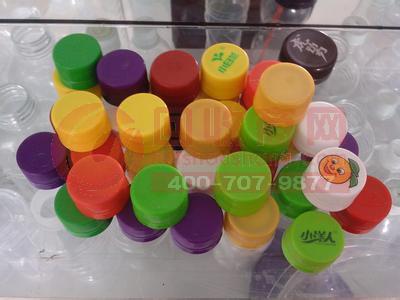
Plastic is a commonly used chemical raw material. It is a polymer organic material which is polymerized by a certain monomer or monomers under certain reaction conditions. Due to its light weight, low cost and excellent performance, it is in the national economy. Occupy an important part.
1. Conventional varieties and classification of plastics
In daily life, the plastics that we can directly touch or perceive are mostly conventional general-purpose plastics, which mainly include five categories: PE, PP, aBS, PVC, and PS. These five types of plastics occupy the vast majority of plastic materials. The rest can be classified into special plastic varieties, such as: PPS, PPO, Pa, PC, POM, etc. They are used in daily life products, mainly in high-end fields such as engineering industry and national defense technology. Automotive, aerospace, construction, communications and other fields. Plastics can be classified into thermoplastics and thermosets according to their plasticity classification. In general, thermoplastic products can be recycled, while thermosetting plastics cannot. According to the optical properties of plastics, they can be divided into transparent, translucent and opaque materials, such as PS, PMMa, aS, PC, etc., which are transparent plastics. Most other plastics are opaque plastics. There are many different ways to classify plastics, which are not introduced here.
Second, the performance and use of commonly used plastic varieties
1. Polyethylene: Commonly used polyethylene can be divided into low pressure polyethylene (HDPE), high pressure polyethylene (LDPE) and linear high pressure polyethylene (LLDPE). Among the three, HDPE has better thermal, electrical and mechanical properties, while LDPE and LLDPE have better flexibility, impact properties and film forming properties. LDPE and LLDPE are mainly used for packaging film, agricultural film, plastic modification, etc., while HDPE is widely used in various fields such as film, pipe, and injection daily necessities.
2, polypropylene: relatively speaking, polypropylene has more varieties, more complex uses, a wide range of fields, mainly homopolymer polypropylene (homopp), block copolymer polypropylene (copp) and random copolymer polypropylene ( Rapp), depending on the application, homopolymerization is mainly used in the fields of wire drawing, fiber, injection, BOPP film, etc. Copolymer polypropylene is mainly used in household appliance injection parts, modified raw materials, daily injection products, pipes, etc. Propylene is mainly used in transparent products, high performance products, high performance pipes and the like.
3. Polyvinyl chloride: Due to its low cost, the product has self-flame retardant properties, so it is widely used in the construction field, especially for sewer pipes, plastic steel doors and windows, plates, artificial leather and so on.
4, polystyrene: as a transparent raw material, in the case of transparent demand, a wide range of uses, such as automotive lampshades, daily transparent parts, transparent cups, cans and so on.
5, aBS: is a versatile engineering plastic, with outstanding physical and mechanical properties, widely used in household appliances, panels, masks, assemblies, accessories, etc., especially household appliances, such as washing machines, air conditioners, refrigerators, Electric fans, etc., are very large in quantity, and in addition to plastic modification, the use is also very wide.
Third, the common way of distinguishing plastics
1. Density method: examine the density of various plastics, use liquid as the medium to test the ups and downs of plastics in liquid medium, to roughly distinguish the large categories of plastics, such as a piece of plastic placed in water, floating on the water surface can be concluded, the raw materials are not PVC (due to the density of PVC >1).
2. Combustion method: mainly check the color of the flame and the odor and smoke emitted during the burning. Generally speaking, the burning flame of the polyolefin raw material is mostly blue or light blue, the smell is mild and light, and the smoke is white, Most of the raw materials with benzene or chlorine are easy to emit black smoke after burning, and the smell is strong. In addition, such as PE, PP has dripping phenomenon, while PVC and so on, there is no drenching, but there is self-extinguishing phenomenon.
3, optical method: mainly to examine the transparency of raw materials, generally commonly used transparent raw materials: PS, PC, PMMa, aS; translucent raw materials are: PE, random copolymer PP, homopolymer PP, soft PVC, transparent aBS, etc. Other materials are substantially opaque.
4, color discrimination method: Generally speaking, if the raw material without additives, if it contains double bonds, the color will be slightly yellow, such as aBS, due to the copolymerization of butadiene, the polymer still contains double bonds after polymerization. Therefore, it will be slightly yellow.
Most other methods of identification rely on a variety of instruments, such as infrared spectroscopy, mass spectrometry, nuclear magnetic resonance, differential thermal scanning, thermal analysis and so on.
Sulphur Dyes,Popular Sulphur Dyes,Sulphur Black 1,Sulphur Black For Cotton
ZHEJIANG E-DYE SUPPLY CHAIN MANAGEMENT CO.,LTD. , https://www.easytodyes.com